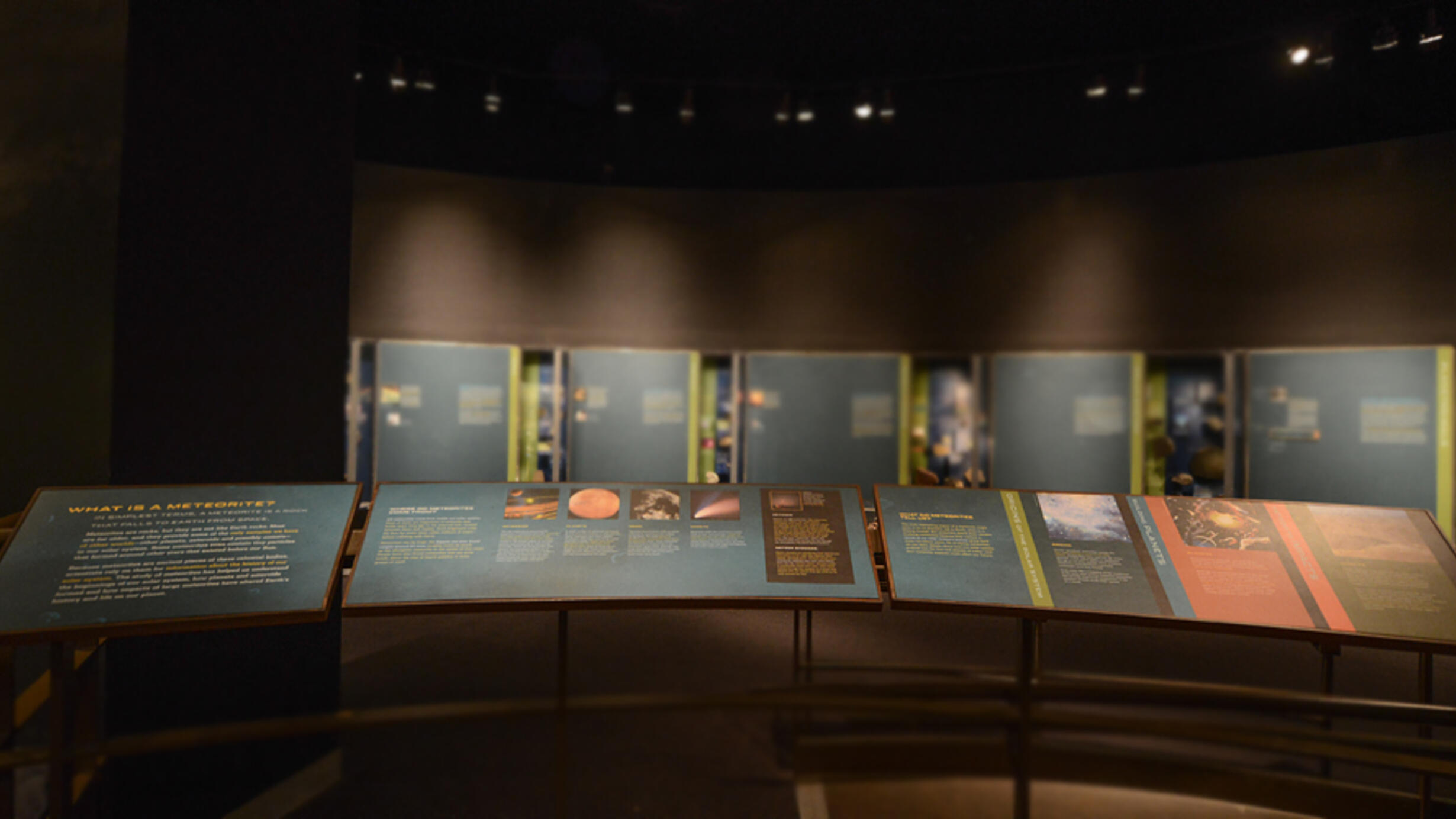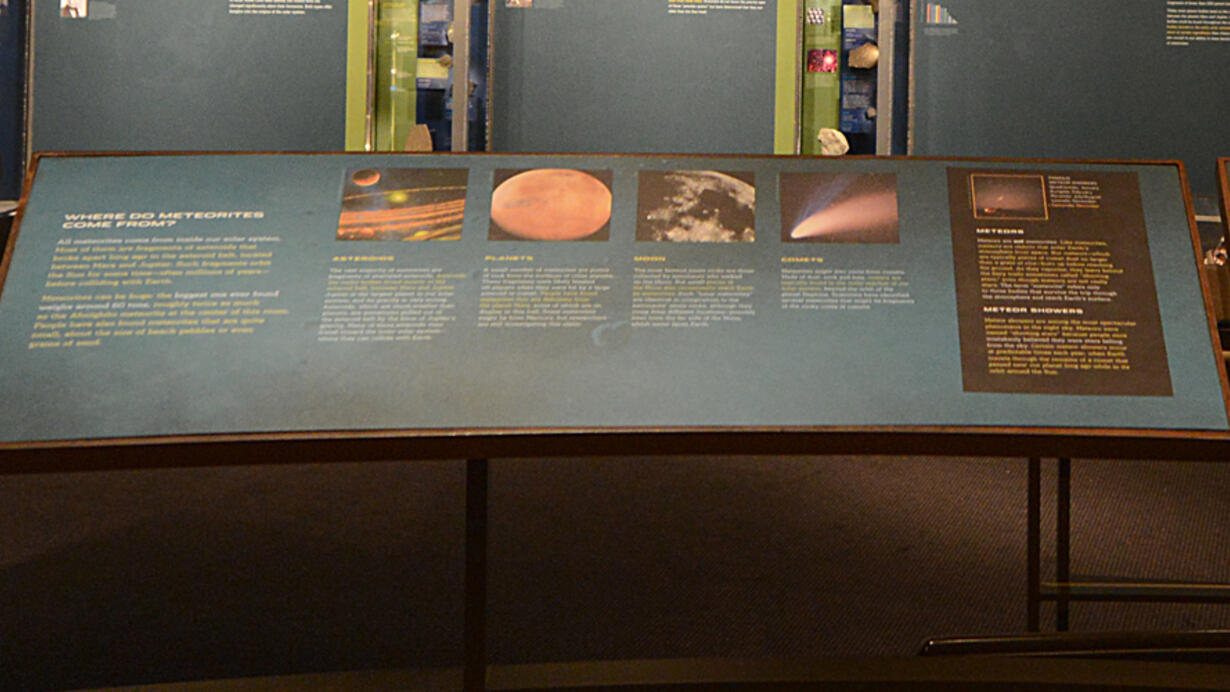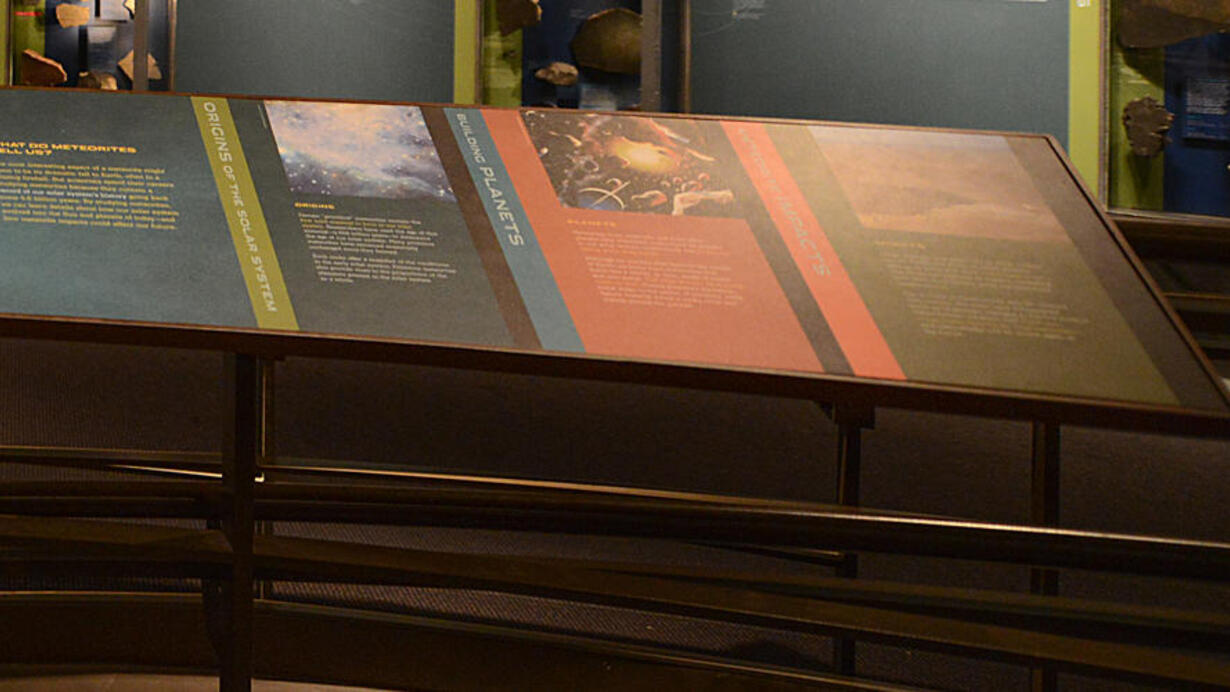What Is a Meteorite?
Part of Hall of Meteorites.

In simplest terms, a meteorite is a rock that falls to Earth from space. Meteorites are rocks, but they are not like Earth rocks. Most are far older, and they provide some of the only samples we have of other worlds – other planets, asteroids and possibly comets – in our solar system. Some meteorites even contain tiny particles that formed around other stars that existed before our Sun.
Because meteorites are ancient pieces of these celestial bodies, scientist rely on them for information about the history of our solar system. The study of meteorites has helped us understand the beginnings of our solar system, how planets and asteroids formed and how impacts of large meteorites have altered Earth’s history and life on our planet.
In This Section

Where Do Meteorites Come From?
All meteorites come from inside our solar system. Most of them are fragments of asteroids that broke apart long ago in the asteroid belt, located between Mars and Jupiter. Such fragments orbit the Sun for some time–often millions of years–before colliding with Earth.
Meteorites can be huge: the biggest one ever found weighs around 60 tons, roughly twice as much as the Ahnighito meteorite at the center of this room. People have also found meteorites that are quite small, about the size of beach pebbles or even grains of sand.
Asteroids
The vast majority of meteorites are fragments of shattered asteroids. Asteroids are rocky bodies found mostly in the asteroid belt, between Mars and Jupiter. Jupiter is the largest planet in our solar system, and its gravity is very strong. Asteroids, which are much smaller than planets, are sometimes pulled out of the asteroid belt by the force of Jupiter's gravity. Many of these asteroids then travel toward the inner solar system—where they can collide with Earth.
Planets
A small number of meteorites are pieces of rock from the surfaces of other planets. These fragments were likely blasted off planets when they were hit by a large asteroid or comet. People have found meteorites that are definitely from the planet Mars, some of which are on display in this hall. Some meteorites might be from Mercury, but researchers are still investigating this claim.
Moon
The most famous moon rocks are those collected by astronauts who walked on the Moon. But small pieces of the Moon also occasionally reach Earth as meteorites. Such "lunar meteorites" are identical in composition to the astronauts' moon rocks, although they come from different locations-possibly even from the far side of the Moon, which never faces Earth.
Comets
Meteorites might also come from comets. Made of dust, rock and ices, comets are typically found in the outer reaches of our solar system, beyond the orbit of the planet Neptune. Scientists have identified several meteorites that might be fragments of the rocky cores of comets.

What Can Meteorites Teach Us?
The most interesting aspect of a meteorite might seem to be its dramatic fall to Earth, often in a blazing fireball. But scientists spend their careers studying meteorites because they contain a record of our solar system's history going back some 4.6 billion years. By studying meteorites, we can learn details about how our solar system evolved into the Sun and planets of today—and how meteorite impacts could affect our future.
Origins of the Solar System
Certain "primitive" meteorites contain the first solid material to form in our solar system. Researchers have used the age of this material—4.568 billion years—to determine the age of our solar system. Many primitive meteorites have remained essentially unchanged since they formed.
Such rocks offer a snapshot of the conditions in the early solar system. Primitive meteorites also provide clues to the proportions of the elements present in the solar system as a whole.
Building Planets
Meteorites from asteroids and even from other planets help scientists understand all planets in our solar system, particularly the processes taking place deep inside.
Although no one has ever been to the center of Earth, we know from meteorites that Earth has a center, or core, made of nickel and iron metal. The other planets have metal cores as well. During planetary formation, metal sinks to the center of the body, while lighter material forms a rocky crust and mantle around the outside.
Meteorite Impacts
Large, fast-moving asteroids or other bodies can hit Earth, the Moon or other planets with such force that they make huge craters. The Moon has millions of craters, revealing how often such bodies enter our planetary neighborhood.
The surface of Earth would also be covered with craters, but most have disappeared because of geologic changes to Earth's surface. Nevertheless, we know that Earth has occasionally been hit by large meteorites—and undoubtedly will be struck again in the future.